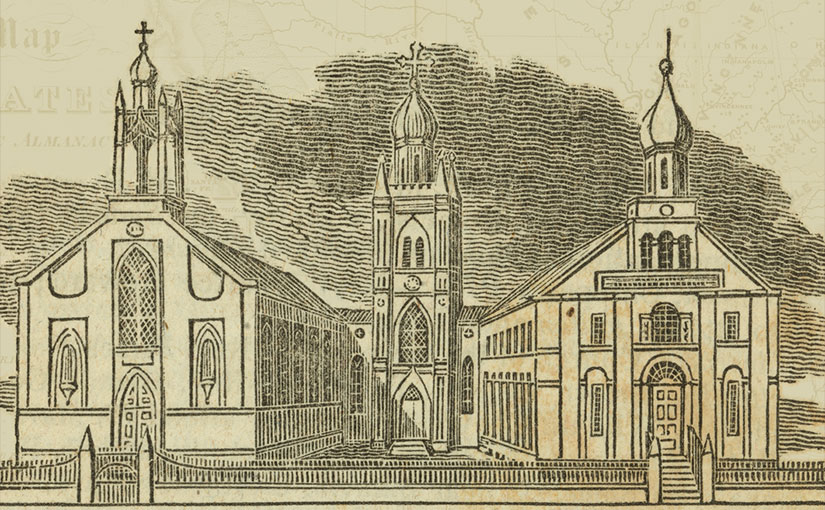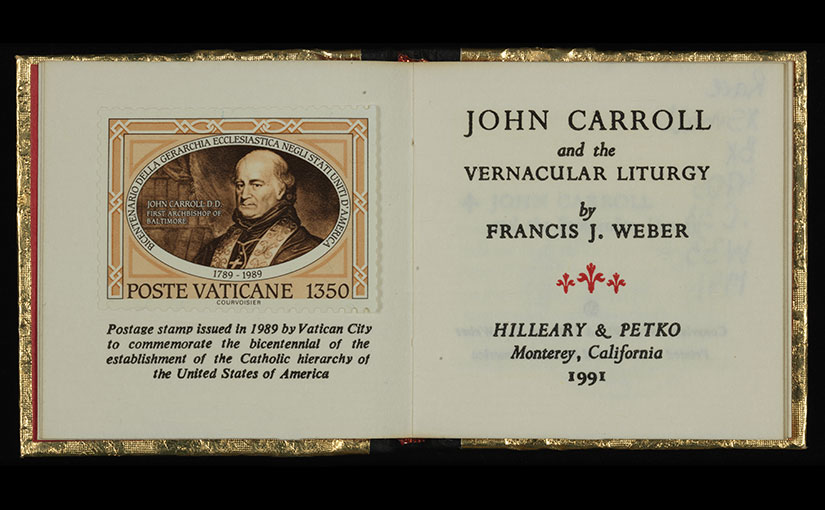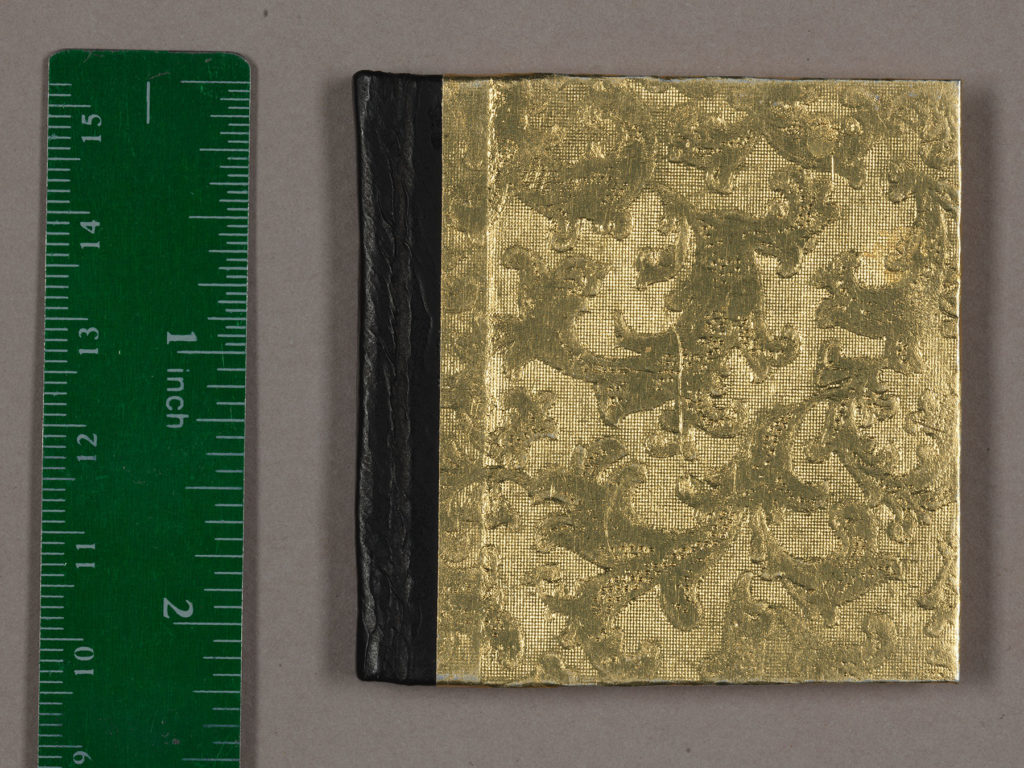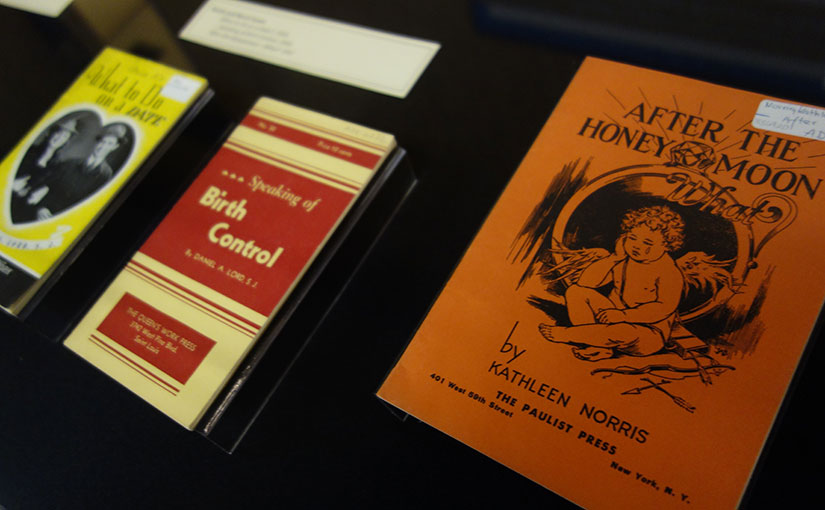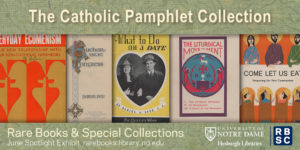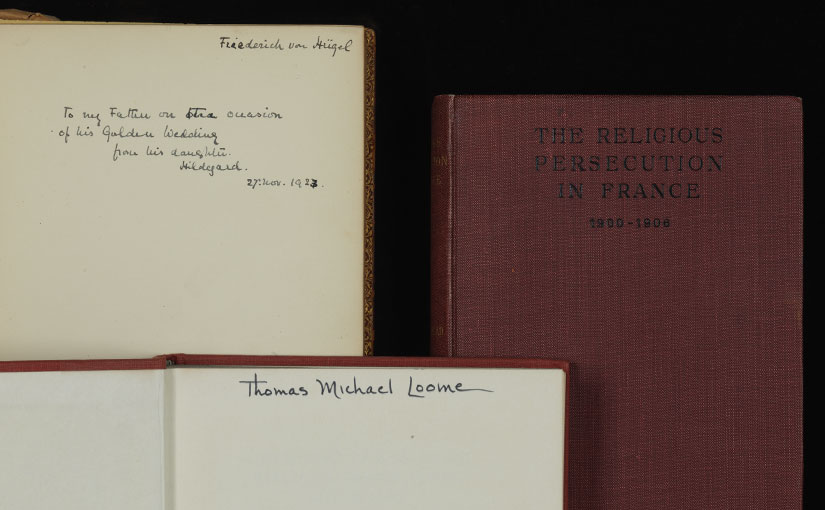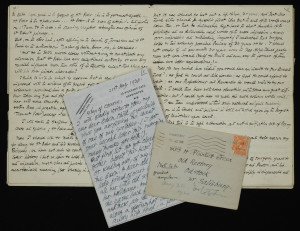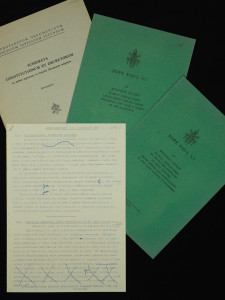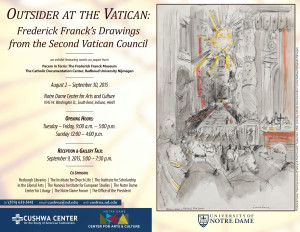The two fencers in Domenico Angelo’s L’Ecole des armes saluted, closing Ingenious Exercises, and welcomed Matthew Carey and the transatlantic story narrated in “Preserving the Steadfastness of Your Faith”: Catholics in the Early American Republic. The new Spring exhibit features printed books, newspapers, and pamphlets that document the flow of ideas about Catholicism between the United States and Europe.
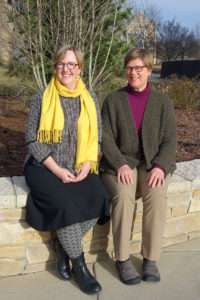 Bringing coherence to the flurry of ideas represented by the diverse artifacts on display are Rachel Bohlmann and Jean McManus. Rachel and Jean (U.S. History & American Studies librarian and Catholic Studies librarian, respectively) teamed up to explore what our collections held on Catholic America. As they began this seemingly daunting task, they soon realized they first needed to address what exactly Catholic literature in America was and what it meant to be a Catholic in America.
Bringing coherence to the flurry of ideas represented by the diverse artifacts on display are Rachel Bohlmann and Jean McManus. Rachel and Jean (U.S. History & American Studies librarian and Catholic Studies librarian, respectively) teamed up to explore what our collections held on Catholic America. As they began this seemingly daunting task, they soon realized they first needed to address what exactly Catholic literature in America was and what it meant to be a Catholic in America.
For Jean, these questions stemmed from Notre Dame’s 2014 acquisition of the The Holy Bible printed in 1790 in Philadelphia by Matthew Carey, more commonly referred to here [on campus? at Notre Dame?] as the Badin Bible. This bible is a copy of the first authorized Catholic bible in English and was translated from the Latin Vulgate in 1568 by members of the English College, a Catholic seminary in Douai in northern France. Its publisher, Matthew Carey, was an Irish Catholic who emigrated to Philadelphia. Known for standing against the British Parliament in defense of Irish nationalism and Catholic emancipation, Carey became a successful Catholic publisher in the U.S. Jean questioned what it meant to be a publisher who was Catholic and, more broadly, what it meant to be Catholic in America.
For Rachel, a common theme that emerged among these sources was their transatlantic identity. As she and Jean chose particular stories to tell, each story connected to Britain or Europe, often in multiple ways. These ties could be in the form of refugees as in the case of Stephen Badin who fled Revolutionary France or ideas such as the pamphlets that circulated between the US, Europe, and Britain and, sometimes, the ties involved both refugees and ideas.
Turning to the principal Catholic Studies reference book, Wilfrid Parson’s Early Catholic Americana, they compared Special Collections’ holdings to the works listed in Parson and selected most of the items on exhibit based upon their inclusion in this work. Their selections represent American Catholicism defined by early printed works that include books, pamphlets, newspapers, official reports, and maps. What emerges is a six-chapter, multinational story beginning in the 1780s and running through the 1840s of early Catholicism in America and its ties to European Catholicism.
The exhibit runs January 16 – August 11, 2017. Weekly tours led by Rachel and Jean on Thursdays begin at 12:30 and will be offered through the end of March. Class tour are also available. Please contact Rachel to schedule a tour.
Upcoming Exhibit Events
“Saint Elizabeth Seton: A Reading Life”
Catherine O’Donnell, Professor of History, Arizona State University
March 22, 2017, 4:00 pm, Special Collections
Historian and former Cushwa Center Fellow Catherine O’Donnell’s talk explores Elizabeth Ann Seton’s spiritual journey as it intersected with Catholic history during the early American Republic. O’Donnell is the author of “John Carroll and the Origins of an American Catholic Church, 1783-1815” and Men of Letters in the Early Republic: Cultivating Forums of Citizenship (2008). She is currently completing her second book, Elizabeth Seton: a Life.
“21st Century Digital Approaches to Rethinking 19th Century Catholic Print”
Kyle Roberts, Professor of Public History & New Media and Director of the Center for Textual Studies & Digital Humanities, Loyola University Chicago
June 1, 2017, 2:00 pm, Special Collections
This talk explores the ways in which new digital humanities projects, such as the Jesuit Libraries Provenance Project, have allowed us to recover the central importance of print to American Catholics. Roberts is also the author of Evangelical Gotham: Religion and the Making of New York City, 1783-1860 (2016).

